#tridevi
Text
To write, read and explain sanātana dharmā is my greatest happiness, though I haven’t shared much here on Tumblr.
However, Vishnu and Shivā work in mysterious ways, and thus, I am finally here on the Sanatana side of things, to interpret as I am blessed by the very Divinity I worship with and as my own heart.
Salutation to Gajanana, the remover of obstacles, the support of His devotees, and the One praised for His Knowledge and Wisdom.
Salutation unto HariHara, the primordial form of the Divine Hari and Hara, of Their Oneness and equality, who is the sole inspiration of my life and my Universe multiplied infinite times.
Salutation to HariHara Patni, SriUma, as I see Her, whose very presence in His heart tells me of stories that play the very ancient games of Leela.
Salutations to Vaani, the Goddess who is my inspiration, who blesses me with words and purpose, who is as dear to me as ever.
Salutations to Brahma, the Creator, the foremost father of all the Devtas and indeed all the worlds, the friend of HariHara and the husband of Medha.
Salutations to Skanda, the God of war, but much more, the Tamizh Kadavul, the Compassion of the world, who ever protects His devotees.
Salutations to Hanuman, for whom there are no words, but who is the dearest to the heart.
Salutations to the Devas and Devis of Svarga and every Loka, for are you not the supporters too of the Universe, and representatives of the Trideva and Tridevi?
#hare krishna#krishnablr#krishna#ramayana#rama#vishnu#HariHara#shiva#writing sanatana#sanatana dharma#sanatana#modern sanatana#modern mahabharata#mahabharata#gopiblr#ramablr#shivablr#devi#tridevi#devadevi#I am going to make many new tags#interpretations#alameluspeaks#srinivasa#ganesha#murugan
70 notes
·
View notes
Text
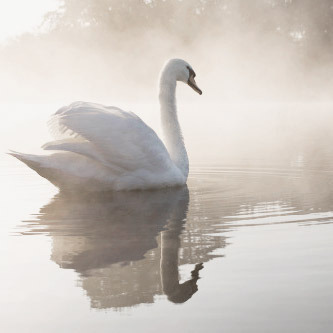

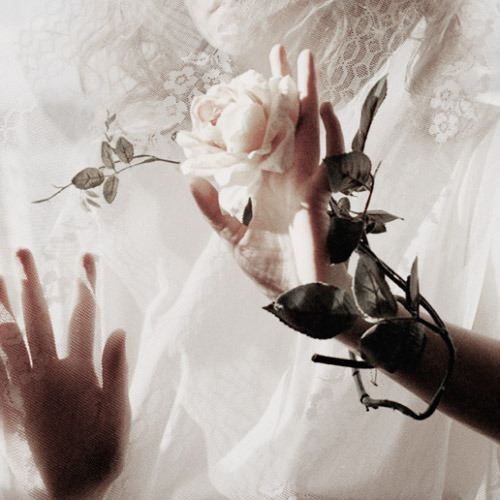





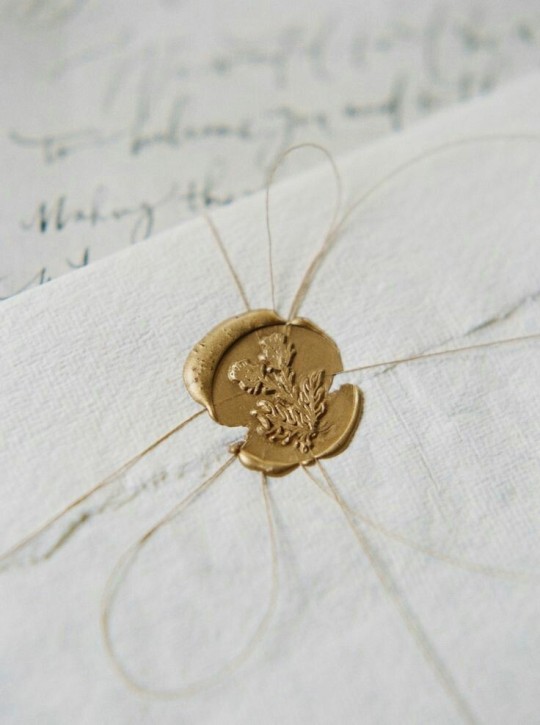
Deity Aesthetic: Saraswati
Hindu Goddess of wisdom, music, art, learning , speech, and the Saraswati River. Member of the Tridevi.
Symbolism of Saraswati:
The Saraswati River
Books
The Lotus Flower
The Colour White
Mount (animal vehicle):
Swan or Peacock
#saraswati#saraswati goddess#hindu gods#hinduism#tridevi#desi culture#desi moodboard#desi blr#desiblr#deity moodboard#period moodboard#moodboard
42 notes
·
View notes
Text
Hari Hara, Hari Hara.
Let's talk about the friendship among the tridevi🥰.
Our Divine Beauty, Brains and Brawn.
Tridevi: *staying on earth in modern times*
Lakshmi: *missing*
Parvati: where's Lakshmi?
Saraswati: did you check the Vishnu Mandir?
Parvati: yea.
Saraswati: did you check India?
Parvati: yea. And I called her too.
Saraswati: grab your passport.
Parvati: why?
Saraswati: she's Chanchala. She might be on the other side of the world by now!
Parvati: oh right.
Lakshmi: *entering some minutes after* planning a vacation??
Parvati and Saraswati: *shocked*
Parvati: where were you?
Lakshmi: I told you that I was going to get some sweets remember. And my phone died, lol.
Parvati and Saraswati: Whew!!
Saraswati: we thought that you were on the other side of the World.
Lakshmi: *laughing* what??
Saraswati: you won't do that right?
Lakshmi: well....there's a possibility. But I would go with you two 💕.
Saraswati: that's fair.
Parvati: yep.
@inc0rrectmyths you'll like 🤭
33 notes
·
View notes
Text
I don’t know guys, but reading tails like those of Sati Anusuya, Bramha not being worshipped, Vishnu avatars being lustful etc. just don’t sit right with me. I feel like they aren’t true to the gods I know, or that they happened in some other reality where scenarios were different. Like, it just does not make sense for me thinking that the Tridevi, who are all praises for each other and devote to each other humbly, who are all knowing and all observing, would be jealous?? We know they are above that, don’t we?
5 notes
·
View notes
Text
Divine Masti Official💫💫
A.K.A~~ The Swarga_Tumble_Page
Masti group.
Admin ~ Tridev and Tridevi.
Group members ~ everyone in Swarglok, as well as other lokas too.

~~~~
Narayan: hey new grouppp?😁😁😁. Finally I can tease Shivi again.
Shiv_: Welcome to our tumblr community guys 🤗.
Narayan: where I tease Shivi.
Shiv_: 😶. Anyways it's my Saubhagya.
Narayan: awww.
Brahma: lol what are you two up too now 😄.
Narayan: Masti.
Shiv_: meditation 🧘♂️.
Brahma: as expected from you two.
Lakshmi: hii.
Narayan: hi priye.🤩
No one's gonna say hi to priye. 😒
Brahma; Namaste.
Shiv_: hello Devi.
Lakshmi: Hey. Just saying that everyone can feel free to chat and post everything.
Parvati_: 💗💯. Recipes too?
Lakshmi: yea Paro💗.
Saraswati: ah everything sounds fun.
Narayan: of course it will be fun. As Shivi is here😝. As you all know, he's my bestie.
Parvati_: all 14 lokas know, Bratha Vishii.
Narayan: 🤩😛
#desi tumblr#Narayan#Tridev#Tridevi#cute#Shiv#Brahma#Vishnu#Hindu#Sanatan dharma#Devas#Indra#Devlok#Vaikunth#Kailash#Lakshmi#Parvati#Devi
15 notes
·
View notes
Text
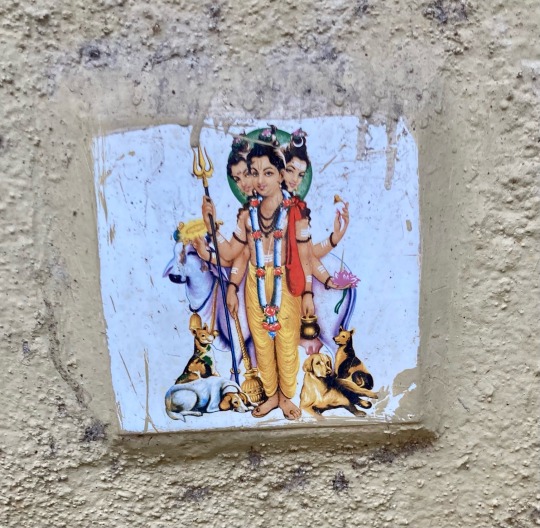
1 note
·
View note
Text
This is one of my artworks
Tridev and Tridevi painting
Hope you like it 🤗

#painting#tridev#tridevi#trinity#hinduism#art#colourful#taping#beautiful#god#godess#deities#endless expertise
6 notes
·
View notes
Text
South Asian and Hindu Influences in ATLA (Part 2)
disclaimer: i was raised culturally and religiously hindu, and though i've tried to do my research for this post and pair it with my own cultural knowledge, i'm not an expert on hinduism by any means. should i mess up, please let me know.
please also be aware that many of the concepts discussed in this post overlap heavily with religions such as buddhism and jainism, which might have different interpretations and representations. as i'm not from those religions or cultures, i don't want to speak on them, but if anyone with that knowledge wishes to add on, please feel free.
Part 1
In the previous post, I discussed some of the things ATLA got right in its depictions of desi and hindu cultures. unfortunately, they also got plenty of things wrong - often in ways that leaned towards racist caricatures - so let's break them down, starting with...
Guru Pathik
both the word "guru" and name "pathik" come from sanskrit. pathik means "traveler" or "he who knows the way" while guru is a term for a guide or mentor, similar to a teacher.
gurus were responsible for the very first education systems in ancient india, setting up institutions called gurukuls. students, referred to as disciples, would often spend years living with and learning from their gurus in these gurukuls, studying vedic and buddhist texts, philosophy, music and even martial arts.
however, their learning was not limited merely to academic study, as gurus were also responsible for guiding the spiritual evolution of their disciples. it was common for disciples to meditate, practice yoga, fast for days or weeks, and complete mundane household chores every day in order to instill them with self-discipline and help them achieve enlightenment and spiritual awareness. the relationship between a guru and his disciple was considered a sacred, holy bond, far exceeding that of a mere teacher and student.
aang's training with guru pathik mirrors some of these elements. similar to real gurus, pathik takes on the role of aang's spiritual mentor. he guides aang in unblocking his chakras and mastering the avatar state through meditation, fasting, and self-reflection - all of which are practices that would have likely been encouraged in disciples by their gurus.
pathik's design also takes inspiration from sadhus, holy men who renounced their worldly ties to follow a path of spiritual discipline. the guru's simple, nondescript clothing and hair are reflective of the ascetic lifestyle sadhus are expected to lead, giving up material belongings and desires in order to achieve spiritual enlightenment and, ultimately, liberation from the reincarnation cycle.
unfortunately, this is where the respectful references end because everything else about guru pathik was insensitive at best and stereotypical at worst.
it is extremely distasteful that the guru speaks with an overexaggerated indian accent, even though the iranian-indian actor who plays him has a naturally british accent. why not just hire an actual indian voice actor if the intention was to make pathik sound authentic? besides, i doubt authenticity was the sole intention, given that the purposeful distortion of indian accents was a common racist trope played for comedy in early 2000s children's media (see: phineas and ferb, diary of a wimpy kid, jessie... the list goes on).
furthermore, while pathik is presented a wise and respected figure within this episode, his next (and last) appearance in the show is entirely the opposite.

in the episode nightmares and daydreams, pathik appears in aang's nightmare with six hands, holding what appears to be a veena (a classical indian music instrument). this references the iconography of the hindu deity Saraswati, the goddess of wisdom and knowledge. the embodiment of divine enlightenment, learning, insight and truth, Saraswati is a member of the Tridevi (the female version of the Trimurti), one of the most respected and revered goddesses in the Hindu pantheon... and her likeness is used for a cheap laugh on a character who's already treated as a caricature.
that's bad enough on its own, but when you consider that guru pathik is the only explicitly south asian coded character in the entire show, it's downright insulting. for a show that took so many of its foundational concepts from south asia and hinduism and yet provided almost no desi representation in return, this is just rubbing salt in the wound.
Chakras
"chakra", meaning "circle" or "wheel of life" in sanskrit, refers to sources of energy found in the human body. chakra points are aligned along the spine, with energy flowing from the lowest to the highest point. the energy pooled at the lowest chakra is called kundalini, and the aim is to release this energy to the highest chakra in order to achieve spiritual enlightenment and consciousness.
the number of chakras varies in different religions, with buddhism referencing five chakras while hinduism has seven. atla draws from the latter influence, so let's take a look at the seven chakras:
Muladhara (the Root Chakra). located at the base of the spine, this chakra deals with our basest instincts and is linked to the element of earth.
Swadhisthana (the Sacral Chakra). located just below the navel, this chakra deals with emotional intensity and pleasure and is linked to the element of water.
Manipura (the Solar Plexus Chakra). located in the stomach, this chakra deals with willpower and self-acceptance and is linked to the element of fire.
Anahata (the Heart Chakra). located in the heart, this chakra deals with love, compassion and forgiveness and is linked to the element of air. in the show, this chakra is blocked by aang's grief over the loss of the air nomads, which is a nice elemental allusion.
Vishudda (the Throat Chakra). located at the base of the throat, this chakra deals with communication and honesty and is linked to the fifth classical element of space. the show calls this the Sound Chakra, though i'm unsure where they got that from.
Ajna (the Third Eye Chakra). located in the centre of the forehead, this chakra deals with spirituality and insight and is also linked to the element of space. the show calls it the Light Chakra, which is fairly close.
Sahasrara (the Crown Chakra). located at the very top of the head, this chakra deals with pure cosmic consciousness and is also linked to the element of space. it makes perfect sense that this would be the final chakra aang has to unblock in order to connect with the avatar spirit, since the crown chakra is meant to be the point of communion with one's deepest, truest self.
the show follows these associations and descriptions almost verbatim, and does a good job linking the individual chakras to their associated struggles in aang's arc.
Cosmic Energy
the idea of chakras is associated with the concept of shakti, which refers to the life-giving energy that flows throughout the universe and within every individual.
the idea of shakti is a fundamentally unifying one, stating that all living beings are connected to one another and the universe through the cosmic energy that flows through us all. this philosophy is referenced both in the swamp episode and in guru pathik telling aang that the greatest illusion in the world is that of separation - after all, how can there be any real separation when every life is sustained by the same force?
this is also why aang needing to let go of katara did not, as he mistakenly assumed, mean he had to stop loving her. rather, the point of shedding earthly attachment is to allow one to become more attuned to shakti, both within oneself and others. ironically, in letting go of katara and allowing himself to commune with the divine energy of the universe instead, aang would have been more connected to her - not less.
The Avatar State
according to hinduism, there are five classical elements known as pancha bhuta that form the foundations of all creation: air, water, earth, fire, and space/atmosphere.
obviously, atla borrows this concept in making a world entirely based on the four classical elements. but looking at how the avatar spirit is portrayed as a giant version of aang suspended in mid-air, far above the earth, it's possible that this could reference the fifth liminal element of space as well.
admittedly this might be a bit of a reach, but personally i find it a neat piece of worldbuilding that could further explain the power of the avatar. compared to anyone else who might be able to master only one element, mastering all five means having control of every building block of the world. this would allow the avatar to be far more attuned to the spiritual energy within the universe - and themselves - as a result, setting in motion the endless cycle of death and rebirth that would connect their soul even across lifetimes.
#atla#atla cultural influences#hinduism in atla#welp i thought this would be the last part but i ended up having more to talk about than i thought#so i'll save the book 3 inspirations for the next post#including my absolute favourite combustion man#and by favourite i mean kill it with fire why did you ever think this was okay to do writers
417 notes
·
View notes
Text
बीजेपी प्रत्याशी महेश त्रिवेदी ने विभिन्न क्षेत्रों में किया जनसंपर्क और मांगा वोट
बीजेपी प्रत्याशी महेश त्रिवेदी ने विभिन्न क्षेत्रों में किया जनसंपर्क और मांगा वोट
प्रोफाइल : नाम : महेश त्रिवेदीज़िला: कानपुर नगरनिर्वाचन क्षेत्र : किदवई नगरपार्टी का नाम : बीजेपीकिदवई नगर भाजपा प्रत्याशी महेश त्रिवेदी ने सरस्वती विद्या मंदिर केशव नगर में…
Source link
View On WordPress
#Bjp candidate#Hindi News#Hindustan#mahesh tridevi#News in Hindi#public relation campaign#vote.#जनसंपर्क अभियान#बीजेपी प्रत्याशी#महेश त्रिवेदी#वोट#हिन्दुस्तान
0 notes
Text
Colours of Vaani
The sound of gentle anklets tinkled joyously in the ears of Brahma, who was in deep thought. The very feel of the sound gave Him a deeper clarity, the anklets belonging to His Eternal Ardhaangini Sarasvati, whose Lotus feet touched the open leaves of the Lotus flowers, they spreading wide just for Her, giving Her feet space, freely offering their reverential devotion. He knew Her feet would be stained red, deeper than the usual red, owing to the fact that She had just come from Vaikunta, where it was customary to send Medha back only with new kumkum applied.
He could envision the mischievous argument which would have broken out then, in the form of banter.
"Medha, can I please colour your feet red?" Lakshmi asked, eyes twinkling innocently, yet filled with mischief.
"Lakshmi, has Bhrata Narayana finally taught you mischief?" Uma teased, giggling when Lakshmi pouted at Her, though the mischief in Her Lotus eyes did not even falter for a second.
"Can I colour yours, Sri?" questioned Medha, Her own eyes, so very much like Shiva's, arresting and beautiful, shone in deep amusement.
"We all will colour each other's," said Sri instead, laughing when Uma gave Her a mock exasperated look.
"Yes, we will!"
"And we did, Swami!"
Her voice was like the pleasant waterfalls that soothed an injured heart and Soul, a gentle balm lovingly caressing and healing. Brahma opened His eyes to see His wife standing in front of Him, one foot pointed, the other flat, the curves of Her soles splendid in their beauty. Her standard half white clothing held the tinge of Vaikunta's Bliss. Her bangles had changed into a different set than the pearl ones She had worn that morning, now decked with rubies studded in gold bangles, a gift Sri had hand crafted Herself, no doubt. The necklace She wore was the same one she always wore, pearl in gold, a gift He had given Her right after their marriage, a symbol of Her purity alone being the reason for the shine of His golden nature that created the Universe with Her help.
He took in Her calm Lotus face, eyes lined with kohl and Her sindoor filled with the red kumkum He always placed on Her forehead, Her pottu beautiful and round. Her hair was plaited and decorated with jasmine, no doubt the handiwork of Uma.
"Swami!"
Medha's face had taken on a deep red hue, making Brahma adore Her even more. Jnanamayi Vidya was blushing just due to His adoration?
"Swami, stop pretending to be some normal human," pouted Sarasvati, touching His feet before sitting down on the Lotus to His left, ever Her position, the Lotus white, much like Her very purity.
"Priye, you make me know the value and meaning of Love. Then how can I not be human with you?"
Brahma's words made Medha smile, tender, loving, deep and shy; She was ever the newly wed bride with Him.
"Words true of you are true of me too, Praneshvara. If you are human with me, I too am only a woman with you. Not MahaDevi, as I am to most," said She, Her voice the compliment of His baritone, both soothing, gently loving the Universe like only the Creators could.
"Vaani, I have not the words to describe you," said Brahma softly. "All I can say is that anything I say is because of you, anything I act upon is because of you. If I am passive, you are the active part of me, ever watchful and present. It is your energy that aids this Creation that is part of my duties."
"Swami, an Ardhaangini is She who is forever a partner to Her husband in every single way possible. She has a share in every creation, every responsibility, in every happiness, and most definitely, in every sadness of His. She is His other half, like He Hers. How can we be different? What you wish is what I do. What I prompt is what you say. We are Complete together."
Brahma just listened to Her adoringly, His eyes conveying the depth of Love He felt for Her. She could see the reflection of His love in His wide eyes, touching Her face and causing a gentle caress on it. A smile on Her lips, She leaned forward to place Her head on His shoulder, the two seated on Brahma Deva's pink Lotus, lost in Their own Bliss, even as the sounds of Sarasvati's Veena sang through the Universe, awakening Joy, Happiness, Prosperity and Righteousness across the endless Brahmanda.
********
@vibishalakshman @thelekhikawrites @celestesinsight @krishna-sahacharini @kaal-naagin @krishnapriyakiduniya @nirmohi-premika @chemicalmindedlotus @whippersnappersbookworm @sakhiiii @ambidextrousarcher @willkatfanfromasia @nspwriteups @dr-scribbler @rupkatha-banerjee @theramblergirl @hinsaa-paramo-dharma @moon-880 @thegleamingmoon Please let me know you thoughts, and do let me know if the rest of you want to be added to the list.
#sanatana dharma#sanatana#sarasvati#brahma#desi academia#desi#desiblr#trideva#tridevi#krishna#shiva#rama#mahabharata#ramayana
40 notes
·
View notes
Text
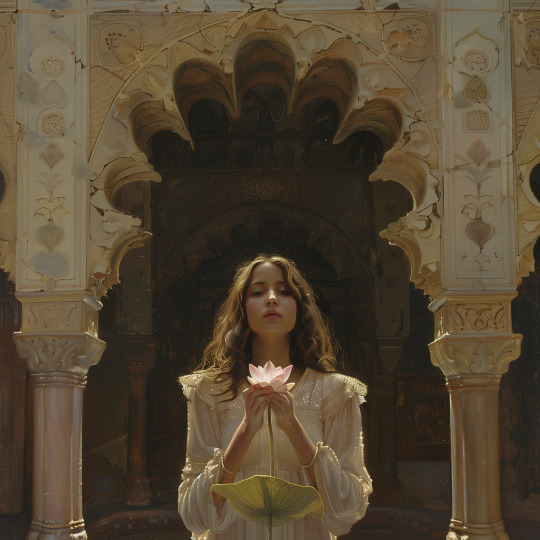
ANURADHA
Anuradha, the 17th nakshatra in Vedic astrology, is a constellation marked by depth and nuance. Influenced by the stern but grounding Saturn and the benevolent deity Mitra (friendship), people born under Anuradha navigate life with a blend of practicality and idealism.
A core strength of Anuradha natives is their talent for building strong relationships. They value loyalty, honesty, and fairness, fostering a sense of harmony within their social circles. Their diplomatic nature makes them adept at bridging divides and creating a sense of unity.

However, this desire for connection can mask a deep well of emotional sensitivity. While they project a composed exterior, Anuradha individuals can be quite attuned to the feelings of others, sometimes to their own detriment. This can lead to a tendency to be overly invested in relationships, requiring them to develop healthy boundaries.
The influence of Saturn brings a dose of realism. Anuradha natives may face challenges and setbacks early on, but they are equipped with remarkable resilience. This perseverance allows them to overcome obstacles and find solace in self-discovery, often through intellectual pursuits or spiritual exploration.
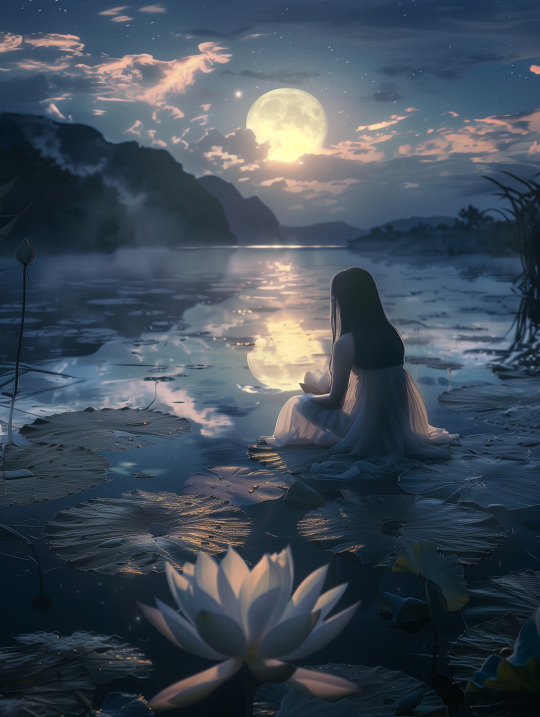
Anuradha's symbol, the staff, hints at their potential for wielding knowledge and navigating complexities. They may have a natural curiosity about occult subjects or hidden patterns. This, combined with a logical mind, can make them skilled researchers or analysts.
Their inherent empathy allows them to connect with people from diverse backgrounds, making them valuable friends and colleagues. However, their sensitivity can leave them vulnerable to emotional overload. Their inherent selectiveness in choosing friends underscores their awareness of this vulnerability and (hopefully) allows them some measure of protection.
Ultimately, Anuradha is a nakshatra of transformation. With their unwavering dedication, empathetic nature, and thirst for knowledge, Anuradha individuals have the potential to become charismatic leaders who champion social causes. Theirs is a journey of uncovering the hidden light within and a testament to the potential for growth that exists even in the most obscure places - just like their symbol, the lotus, that blooms from muddy waters.
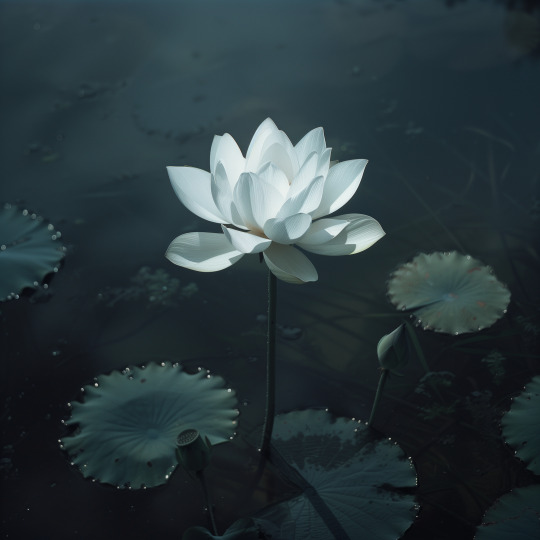
References
Sutton, Komilla. Nakshatras: The Stars Beyond the Zodiac. The Wessex Astrologer, 2014.
Tridevi, Prash. The Book of Nakshatras: A Comprehensive Treatise on the 27 Constellations. Sagar Publications, 2005.
Mangal Bhawan blog:
https://blog.mangalbhawan.com/nakshatra/anuradha-nakshatra/
Poddar, Sarajit. In search of Jyotish 9: The Nakshstras. Kindle Direct Publishing,2022.
Astrosaxena website:
https://www.astrosaxena.in/astrology/info/210/anuradha-nakshatra
#jyotish#nakshatras#vedic astrology#ai art#nakshatra#midjourney#sidereal astrology#anuradha#mitra#scorpio#lotus flower
78 notes
·
View notes
Photo

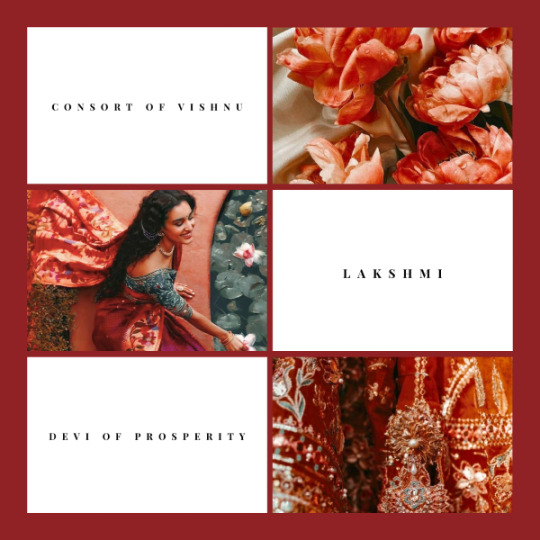

arbitrary aesthetics - The Tridevi
image credits to respective owners
246 notes
·
View notes
Photo
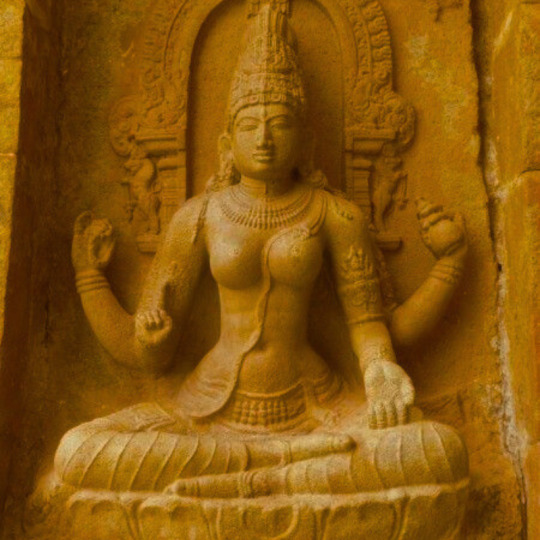



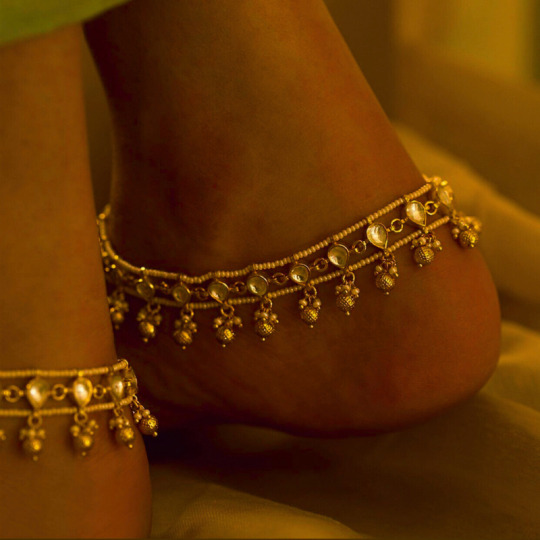
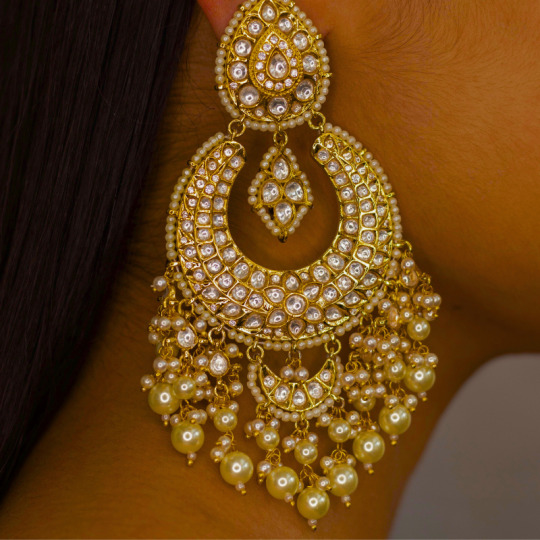



hindu mythology: sarawati, laxmi & parvati
saraswati is a hindu goddess who represents education, creativity, and music. laxmi is the goddess of wealth, good fortune, youth, and beauty. parvati is the archetypal mother goddess and fertility image. they are known as the tridevi, which are a trinity of supreme divinity.
247 notes
·
View notes
Text
There are certain Purans which , while telling the tales of Gods also go out and show others as “Inferior”? I mean the Lingam Puran, The Skanda Puran, even Bhagwad Puran? Be it the goddesses being jealous of Mata Anasuya, Krishna having taken 16k wives for his “lust”, yada yada yada, you get the jist.
I feel like this comes from the one line that Tulsidas ji denoted:
Jaaki rahi bhavna jaisi prabhu murti tin dekhhi taisi (the feelings one harbours determines the way God’s statue appears to him)
So, I feel like the reason is that while looking for him with a positive urge, sages like Valmiki, Vyas and Tulsidas found him and others in a positive note that fits and has molded our perception of God, And those who did not care for the other ones or loved their deities as superior to rest found versions that showed other being impacted by negative emotions and not having enough power and all?
I’m not saying that they are wrong, I feel like some context or reasoning may be missing as to why the all knowing acted this way or that these things happened in different realities where they seem morally and devotionally fitting. Plus, If this is how Gods chose to reveal themselves then it just goes and shows how humble and loving they are, unbothered by their positions as long as a devotee gets to be happy. I just feel like the reason said devotees found them as such was because this was their perception, the way they looked for them. No way of looking is wrong as long as its filled with devotion and respect, but I do feel like these things either didn’t happen in this world/reality or there is a context of pre planned conception missing, making Tridev and Tridevi seem flawed.
2 notes
·
View notes
Text
NEW PERCY JACKSON BOOK!! The Wrath of the Triple Goddess!
Honestly, I’m so thrilled, especially after CotG. But the title gives me a LOT of ideas. There are tons of triple goddesses in mythology, and some of them aren’t even Greek/Roman! Examples (and my thoughts on them!):
- The Charities/Graces: they don’t seem super wrathful, but hey. I could definitely see Percy having to go through an etiquette class. :)
- The Horai: Again, the seasons aren’t super wrathful, but Rick could have a ton of surprises in mind!
- The Morai: Percy has cheated fate so many times that I could totally see this happening. It’d be a really interesting concept!
- Hera: Hera is referred to as a goddess sometimes because she can represent childhood, womanhood, and widowhood. I feel like this would be kind of stretch, but the title really fits and I would LOVE to see some Percy and Annabeth and Hera conflict.
- Hecate: Hecate is supposedly a triple moon goddess, and the OG triple goddess at that. However, I don’t think this will be about Hecate, because we’ve already seen her in HoH and BoO, and she was on the side of the heroes. Idk though. (Sometimes Hecate, Selene, and Artemis or Hecate, Demeter, and Persephone were grouped as a triple goddess, but this would definitely not make sense in the CHB universe!)
- Tridevi: This is a Hindu goddess, which we haven’t seen Rick write anything on, and I’d love to see a Riordanverse crossover. However, I’m not sure I like that idea of having a Hindu crossover because Hinduism is a real religion with millions of people practicing. I’m not on an expert on this in anyway, nor do I think we shouldn’t have that representation in Rick’s books, but it would have to be written very well and not appropriate the religion and culture.
- The Morrigan: Irish mythology and probably the most well known triple goddess. When I first heard the title my mind went to this. Rick has shown obvious interest in this subject, so I think there’s a really good chance we’ll see something about this in the future! And once again, I’d love a crossover. However, not sure that this is the book it’ll be in.
- Norns: We see these in Magnus Chase, and it’s be awesome to see Magnus and Percy interact. However, the first time Percy and Magnus meet takes place AFTER the events of this book, so it’d probably be a crossover without Magnus, which would kind of defeat the purpose.
- There is also something in Egyptian history called the triple goddess stone, but I’m not sure entirely what it is, or if there is even a figure that’s behind it. Maybe this is all wishful thinking, because I’d LOVE to have a Kane chronicles cross over. Granted, it might not work time-wise, but it’s be awesome.
This is all just me having too much invested in a series from when I was 12 and having too much free time. It’s also all just guesses, so please don’t take this too seriously. There’s just a lot of different routes Rick could take (tons of which did not make this post) and I’m excited to see where it ends up!
Note: I’ve done more research and it appears that Hecate will indeed be featured in the book, but there could be more figures, like Demeter/Persephone or Artemis/Selene, or an entirely different goddess! It probably is Hecate, but there’s still lots of options!
#percy jackson#percy pjo#pjo#pjoverse#percabeth#percy Jackson and the Olympians#percy Jackson and the chalice of the gods#wrath of the triple goddess#rick riordan#riordan universe#camp halfblood#mythology
28 notes
·
View notes
Text
Nakshatra's and birds through mythology and interpretation✨ :
✵𝗛𝗮𝗺𝘀𝗮/ 𝗛𝗮𝗻𝘀𝗮 / 𝗦𝘄𝗮𝗻 🦢
Swan is the bird associated with Ashwini , Ardra , Purva Phalguni , Vishakha and Uttara Ashadha .
Swans are gracefully long-necked, heavy-bodied, big-footed birds that glide majestically when swimming and fly with slow wing beats and with necks outstretched Swans are birds of the family Anatidae within the genus Cygnus.

Mythology:
In Hindu tradition, swans, are noted for characteristics of discipline, stamina, grace, and beauty ,"The white swan," he clarifies " is mythologically represented as the vehicle or mount of Brahma the Creator. The sacred hansa, said to have the power of extracting only milk from a mixture of milk and water, is thus a symbol of spiritual discrimination. Symbolic for a spiritually advanced being who is capable of controlling the breath energy in such a way that he only absorbs pure vibrations from all the different energies the world contains.
The Hamsa is credited with the power of separating Soma from water (as later milk from water) in the Yajur Veda (Kataka, Maitrayani, Vajasneyi Samhitas and Taitriya Brahmana).The soma plant when crushed exudes the juice with a hissing sound. This is compared to the hissing of a swan when disturbed on the water (RV 1-65-5).
Hum indicates expiration or exhalation of breath while so indicates inspiration or inhalation of breath. Thus the word, Ham-so which eventually becomes Hamsa, is the embodiment of breadth which gives us life. Hamsa, the bird, is the physical manifestation of that thought; it symbolizes pran or the life-force whose movement into and out of the body generates life .When saints who are well versed in the Yogic techniques breathe in and out it sounds ‘Ham…… Sa…… ‘Ham…… Sa….’ leading to Soham+ He is I. , relating to the connection to the divine, in a way , the universe is within one itself . Great saints are called Parama hamsa. It means Supreme Swan.
Swans are believed to have laid cosmic eggs, from which the Gods were created. One of the earliest myths involves Brahma, the Hindu creator god, is said to have emerged from the cosmic egg laid by Hamsa, the swan-goose. When the egg hatches, the yolk and the white become Heaven and Earth. This is very similar to the myths of ancient Egypt, and the Great Cackler, a celestial goose. This goose, or an ibis-formed Thoth, god of the moon and of wisdom, lays a cosmic egg containing Re/Ra, the solar god whose heat creates the world.
Brahma the creator god and saraswati are mythologically shown with swan as their vahan or carrier animal. Varuna avoided Ravana by transforming himself to a swan and later gave a boon to the bird for his help and made him permanently white! Since Brahma has it as his Vahana the bird is also called Surapriya (Friend of the Devas). Lord Vishnu is also portrayed as riding swans in Hindu folklores.
Saraswati (Sanskrit: सरस्वती, IAST: Sarasvatī) is the Hindu goddess of knowledge, music, art, speech, wisdom, and learning. She is one of the Tridevi, along with the goddesses Lakshmi and Parvati. Saraswati. Mother goddess; goddess of knowledge, music, arts, speech, wisdom, learning and the Saraswati River . Saraswati does not adorn herself with flowers or jewels. She wears a white sari, thus rejecting the cosmetic pleasures of life. She is not associated with any fertility symbol or any emblem of power. She rides a swan, symbol of discernment and detachment. goddess Saraswati endows human beings with the powers of speech, wisdom, and learning. She has four hands representing four aspects of human personality in learning: mind, intellect, alertness, and ego.
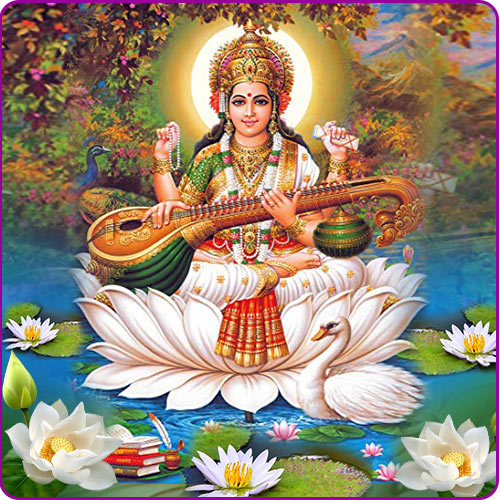

Hamsa is associated with Holy Ganges and holy Lake Manasa Sarovar. It is one of the purest birds. Hamsa Gayatri confers the power of discretion on the person who recites it. Like that Hamsa separates the good things from the bad things, Water birds separate good water from the bad water. It has got a sieve like structure (lamellae) in its mouth which separates water from mud. Probably this is what lead to the belief that Swans can separate milk from water and drink only milk. This myth may be correspondent to the steam distillation method,. Milk is composed of many components like lactic acid, water, calcium and vitamins which are dissolved in water. Providing the controlled form of heating will evaporate the water, leaving the solutes suspended behind. What is possible is to concentrate the milk by evaporating a part of the water contained in milk. Bringing milk to a boil and allowing it to evaporate will remove water and make the milk more concentrated. This is how condensed milk is prepared. If you take this to an extreme, you will end up with “powdered milk”, which is a solid, which also shows the transformation attached to the natives .
Swans were seen to be maidens called Valkyries who swooped down to earth searching for the souls of brave dead warriors. In early mythologies, Valkyries were blood-soaked raven-goddesses who were seen in the battleground pecking on corpses. But later, they were romanticized as swan-maidens, who chose the bravest of warriors and took them to the abode of the gods, Valhalla. Romans associate swans with Apollo, the God of music, prophecy, and poetry. Also, some Irish poets used to wear swan feather cloaks. In Shamanism, the Shamans believed that the swans were the souls of traveling shamans. What’s more, female Shamans are called ‘swan’ in a few Native American languages. There is an Irish story – the tale of children of Lir, which features the storyline where children are transformed into swans. China, swans are often associated with fairies – pure souled mystical creatures who love to play a few tricks at times. In Japan, swans are symbolized as protectors, as mentioned in the legend where a swan from heaven descended in order to protect a young boy.
Symbolism:
🦢Dying swan’s song is considered by some Christians to be a reminder of Jesus on the cross and is associated with the spirit of Jesus.
🦢 symbolizes is feminine intuition. Swan spirit animals also guide you to follow your instincts.
🦢Their long necks resemble the ability to peek into the future and know beforehand what lies ahead.
🦢Undeniably that they symbolize grace and elegance.
🦢Swans’ big soft white wings are considered to be angelic. So, these birds are believed to have a spiritual meaning of an angel.
🦢Swan spirit animal enhances your creativity and fluidity. But at the same time, you’ll feel the unexplained urge to do everything perfectly even if the situation or work doesn’t demand it.
🦢A baby swan is called a cygnet and the word is very similar to Cygnus (Latin word for swan), which is a constellation. The star constellation is based on Queen Leda, who is ravished by Zeus, who visits her in the form of a swan. The union gives rise to Pollux and his half-brother Castor, which form the Gemini constellation. To have swan as a spirit animal means you are blessed by the celestial beings.
🦢 A woman’s gait is compared to the gait of a swan in Tamil (Aka.279) and Sanskrit literature.
🦢Swan transforms from small, ugly, and clumsy, into large, beautiful, and graceful. This swan power animal is all about transformation. It is also about being your ‘inner mate.’
🦢Only when you form a ‘close loving bond’ with yourself can you bond with others. The swan is regal, refined, loving, and a pure and royal emblem. Water, which is where all swans live, symbolizes emotions. That is why; swans are an emblem of sensitivity and love.
Interpretation through the Nakshatras :
❤︎ Ashwini :
Ashwini is denoted by the element of earth , with the Tri murthi association of Brahma i.e. to create , this represents the earthy desires to fulfill the life force by engaging into various activities A long neck allows a Swan to forage both on land and underwater. A swan with a short neck would need to get closer to land to forage in water and won't see as far out for predators as other swans, this represents the go getter mindset of the Ashwini natives and their urge to create the life they desire through their hard work .Swans are far stronger, and far more aggressive, than most people realize , they bite when provoked , the native can be kind and loving but will take the required action , if you offend them.
❤︎Ardra:
Ardra is denoted by the element of water, with the tri murthi association of shiva which represents dissolving / transformations. Represented as the star of sorrow, they undergo many transformations in their life, which can make them quite unstable . This can be denoted with the black swan, which is a symbolism of the protective power of romance, the joy and freedom felt in helping others as well as equality. It also stands for your deep inner mysteries that are desperate for a creative expression to be set free. It can also be associated with the swan song (Ancient Greek: κύκνειον ᾆσμα; Latin: carmen cygni) is a metaphorical phrase for a final gesture, effort, or performance given just before death or retirement. The phrase refers to an ancient belief that swans sing a beautiful song just before their death since they have been silent (or alternatively not so musical) for most of their lifetime. Swans learn a variety of sounds throughout their life time. Their sounds are more distinguishing during courting rituals and not correlated with death a swan only sings once, immediately before its death. Ardra natives thus have a life full of learning from experiences and fighting their way, struggling to finally become a beautiful song, an embodiment of wisdom and intuition. Swan song may not always mean the native will gain at the end of their life, it rather suggests the fruits after a harsh transformation period.
❤︎Purva Phalguni :
Purva Phalguni is denoted by the element of water, with tri murti association of Vishnu i.e preservation / maintenance, which represents beauty and abundance that stays for a long time. Swans are considered to be symbols of beauty, intuition, grace and luxury and are believed to have spiritual meaning of an angel, which clearly manifests in this Venusian nakshatra . Swans are known for their powerful pair-bonding and are held up as an example of monogamy, they’re not perfectly monogamous, nor do they always mate for life. It wouldn’t be very conducive to the survival of the species if all swans that lost their mate never bred again; after all, swans are eaten by a lot of different animals. A purva phalguni native is sensual and makes a great lover, they radiate , generiosity , prosperity, charisma , energy and creativity .
❤︎Vishakha :
Vishakha is denoted by the element of fire, with tri murthi association of Brahma i.e creation, which symbolizes holy fire and the power and energy to achieve .A hamsa is not limited by platform and boundaries. It is one of the rare creatures which can live on the land, live on the water as well as fly on the sky. The Hamsa is limitless and is not restricted to one medium alone, which represents the boundless nature of vishakha natives. Mother swans are extremely protective of their babies and are fiercely aggressive when someone tries to harm her cygnets; Vishakhas are very fiery, jovial and are the life of the party. They also exhibit the spiritual and religious spirit of swans.
❤︎Uttara Ashadha :
Uttara Ashadha is denoted by the element of Air, with tri murthi association of shiva which represents dissolving / transformations. These birds are very discplined and follow their day like a clock. They will wake up at the exact time every day, throughout their lives. Then they will follow the same routine throughout the day. They seldom break their routine unless of course their exists a pressing reason. These birds are very predictable in their timings, behaviors and day to day operations. The native is very hardworking and patient, they also possess leadership qualities .The native also becomes a humanitarian.
Representation in media:
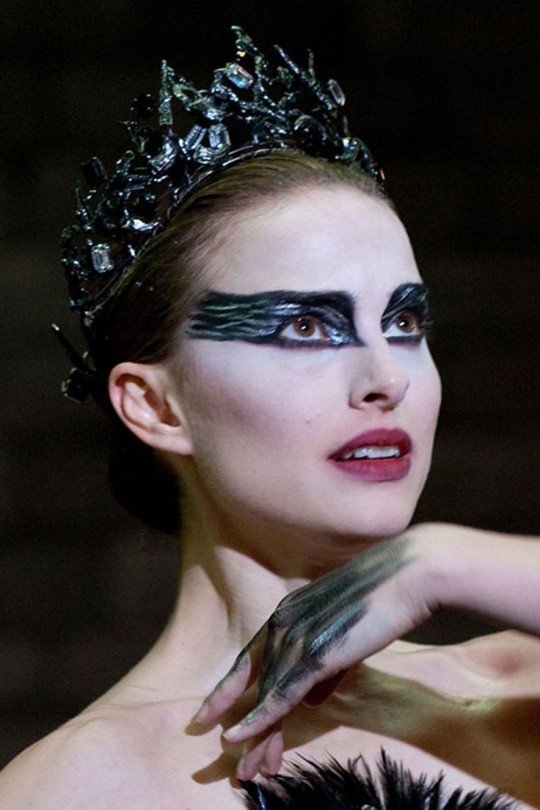

1st picture : Natalie Portman , 2nd picture : Grace Kelly
𑁍Black swan starring Natalie Portman , she has moon in Purva Phalguni, mercury in Ardra ,Venus in Ardra and Lilith in vishakha , she overall portrayed the role of transformation in the movie with absolute perfection , denoting the turmoils and the ending with the swan song which was her last performance.
𑁍The swan starring Grace Kelly ,she has sun in Vishakha ,mars in Vishakha and descendent in Ashwini . In the movie she portrays the graceful , romantic , sensual and pure sides of the natives , mostly adorned with white attire .


The mythology and symbolism in this post is researched from Google , and the interpretations are done by me , you can have your own theories.
Thank you for reading 🥺💗
Have a great day/ night ✨.
#vedic astrology#sidereal zodiac#sidereal astrology#vedic culture#vedic notes#vedic stories#indian mythology#astro community#astrology#nakshatra#ardra#ashwini#purva phalguni#uttara ashadha#astro notes#swan stuff#vishakha
467 notes
·
View notes